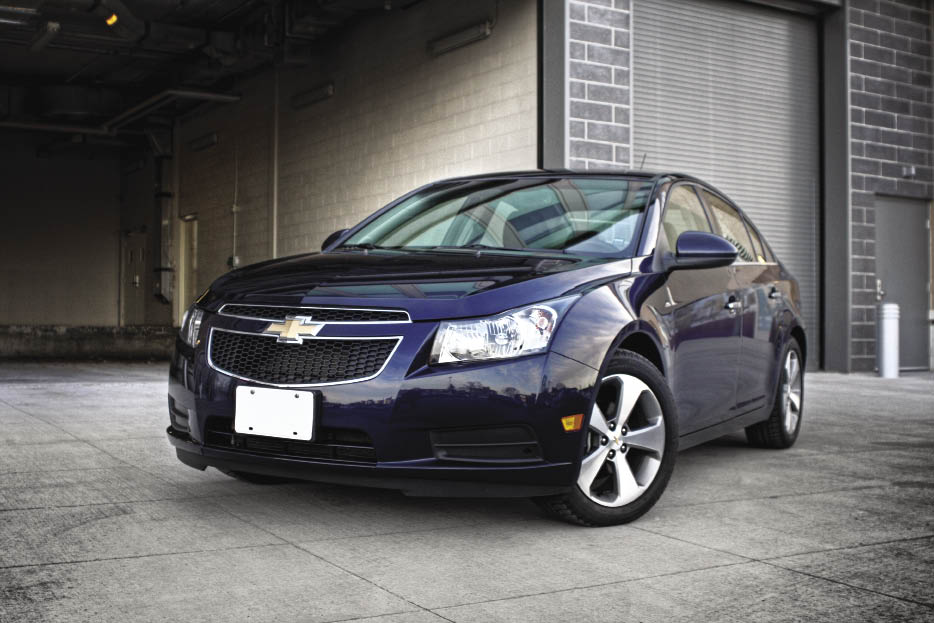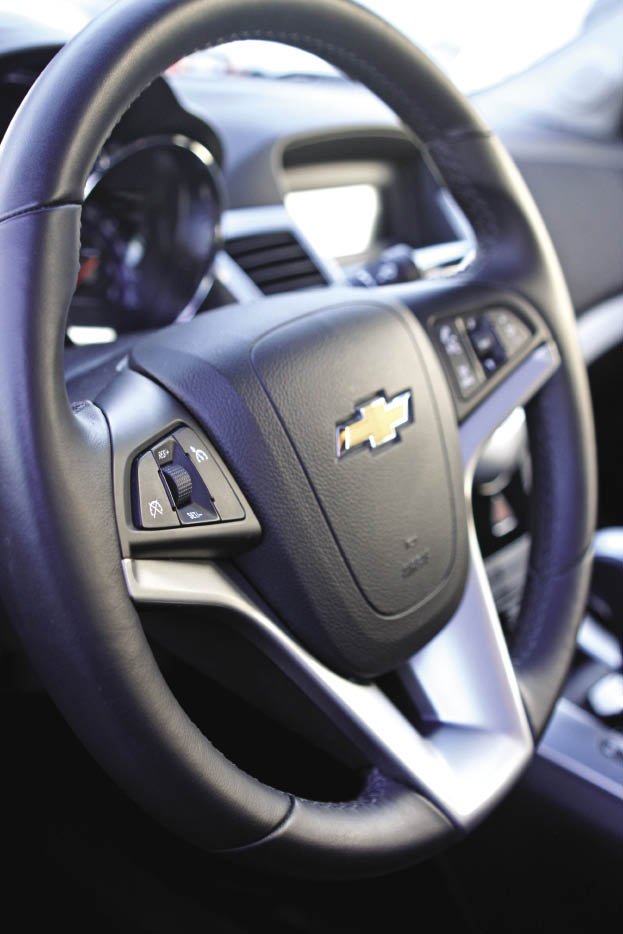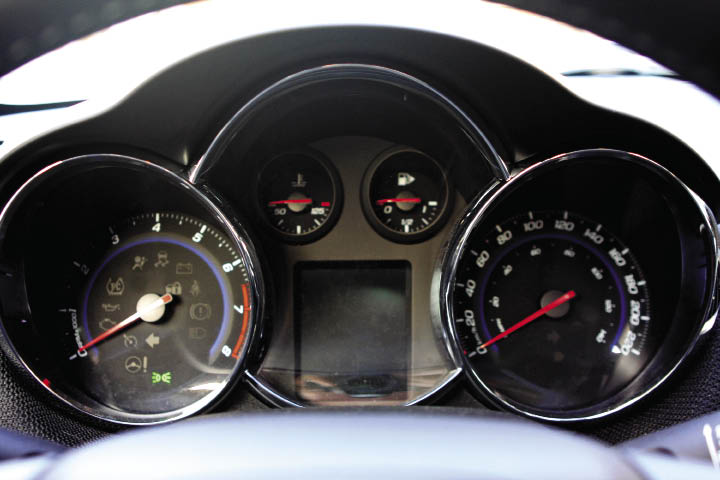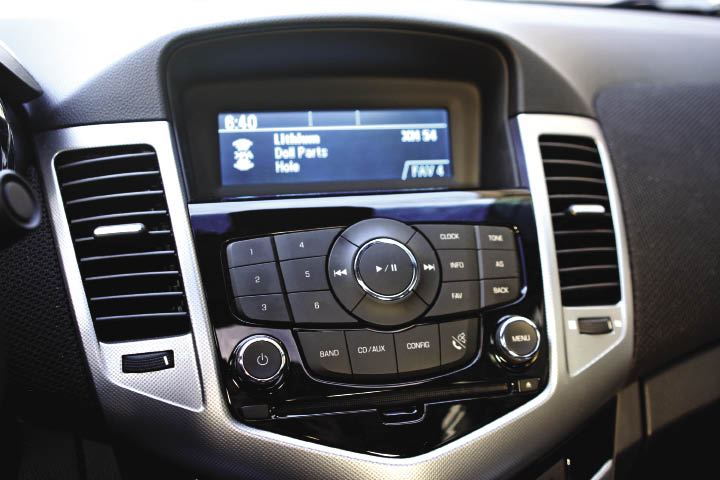 It would be difficult to overstate the importance of the Cruze, not only for Chevrolet’s future prospects, but also for those
It would be difficult to overstate the importance of the Cruze, not only for Chevrolet’s future prospects, but also for those
of post-bankruptcy General Motors.
Suffice it to say, GM has a lot riding on this car’s prospects and, so far at least, the Cruze’s early returns have been promising.
GM’s reported sales for March 2011 were up 11% in the U.S. and 32% in Canada over March 2010, and the Cruze has been driving those increases – its sales were 80% greater than its predecessor (the Cobalt) over the same time period.
In addition to strong sales numbers, the Cruze has racked up a considerable amount of praise and accolades from the automotive press in the past year, both around the world and in Canada. Among the most significant of these was the 2011 Car of the Year Award it received from the Automobile Journalists Association of Canada in February at the Canadian International Autoshow.
Rolled out across the globe over a period of about a year and a half beginning in the spring of 2009 and culminating with its North American launch last fall, the Cruze replaced the Cobalt, a descendent of GM’s original small car platform (J-car) which began in the early 1980s with the Cavalier.
Long lamented for lacking refinement, with subpar reliability, fit and finish and bland styling, one of the few attractive aspects of the Cavalier (and the Cobalt) was its relatively low cost and good packaging. These cars, if nothing else, were usually relatively inexpensive to own and came with a decent array of standard equipment.
 With the Cruze, however, GM has made a clean break with the past as it has elected to base it on a completely different platform that has little in common with the Cobalt.
With the Cruze, however, GM has made a clean break with the past as it has elected to base it on a completely different platform that has little in common with the Cobalt.
Developed globally, GM turned to its international units to bring the Cruze to life. GM Daewoo was responsible for much of the design work and the engineering came from Opel, which developed GM’s new small car platform on which the Cruze is based, the Delta II.
Their efforts resulted in more than $4 billion spent (all figures U.S.) on development that lasted more than 27 months. More than 200 prototypes were tested in seven countries, including Canada.
Taking the long way home has resulted in an exceedingly well-built and attractive car- from its handsome, angular lines, to its well-appointed interior, quiet ride and excellent fuel economy, the Cruze is light years ahead of the Cobalt by any measure.
The tester I spent a week with was the top of the line LTZ model, which comes equipped with 17” alloy wheels, a leather interior and an upgraded stereo with XM satellite radio and Bluetooth connectivity.
Despite the greater amount of content the LTZ has, GM has wisely chosen to make safety and value available to all Cruze buyers. Every model receives 10 airbags, StabiliTrak (stability control) and 4-wheel ABS with traction control. Other standard features include keyless entry, power windows and door locks, tilt steering, a six-speaker stereo and driver information centre.
Among the most discussed aspects regarding the Cruze has been its engine lineup. The base level LS models come equipped with the 1.8 litre ECOTEC 4-cylinder powerplant, which develops 136 horsepower.
The LT and LTZ feature a 1.4 litre turbocharged ECOTEC 4-cylinder unit that delivers 138 horsepower. The rationale behind smaller displacement is that it will be able to provide decent power thanks to turbocharging, while also delivering impressive fuel economy.
Underpinning the Cruze are MacPherson struts up front and a torsion beam set-up with a Z-link in the rear. Although not as sophisticated as a multi-link independent setup employed by some of its rivals, the Z-link option saves space and is less expensive. As a result the Cruze has a spacious trunk and has a price that starts just under $15,000.
Impressions
There has been some criticism that the Cruze’s styling is fairly pedestrian and doesn’t push the edge of the envelope enough.
To my eye, it is much more attractive than the Cobalt and the creases that cover its surfaces are in keeping with current trends in automotive design. The nose and grill are fairly prominent, and the angled and tapered headlights may turn some off, but I thought the Cruze to be a thoroughly handsome, modern-looking car. Not a game-changing look perhaps, but an attractive one nevertheless.
The LTZ sits a lot lower than I thought it would (thanks to a lowered ride height), which gave me the impression I was riding in a coupe instead of a sedan.
 |
 |
 |
I had no trouble finding a decent driving position thanks to the well-supported leather seats, and tilting steering wheel which had a thick and substantial feel.
The Cruze cabin offers a very inviting environment with lots of soft-touch, higher quality materials. For a car in this price range I was impressed with how little hard plastic was used. Compared to the Cobalt, the Cruze feels downright luxurious.
The analogue instrument cluster is backlit in a soft ice blue, which was both legible and easy on the eyes. The centre stack features an LCD screen that displays radio data, time, outside temperature and compass info, also in blue.
The knobs and switches featured a smooth operation and nice tactile feel. None were too fussy to use, although it took a few tries before I figured out how to scroll through all of the various readings (odometer, trip meter, tire pressure readings, etc.) located on the left stalk on the steering column. The headlight switch is also on the dash as opposed to the stalk, which took a little getting used to.
I drove the Cruze on a variety of road surfaces in both heavy and lighter traffic, in both wet and dry conditions and came away impressed with how the car handled each situation.
The LTZ’s suspension was a little on the stiff side, but the ride was generally comfortable and
I found its reflexes to be quite sharp. The electric steering had good on-centre feel, and the bigger wheels and tires helped the car feel secure at all speeds. The brakes were excellent.
 The turbocharged four was reasonably quiet at highway speeds, although in stop and go traffic, I could hear it going about its business, but it wasn’t nearly as thrashingly loud as those found in its predecessors – no sewing-machine buzz either.
The turbocharged four was reasonably quiet at highway speeds, although in stop and go traffic, I could hear it going about its business, but it wasn’t nearly as thrashingly loud as those found in its predecessors – no sewing-machine buzz either.
Acceleration (turbo) lag was noticeable at times, mostly from a standing stop. I also had to stand on the gas a little on a few occasions to get by other vehicles, but once the boost came in the Cruze zipped through traffic with ease.
Overall, its acceleration was adequate in most normal driving situations, but if the power output of the engines grows over time, it wouldn’t be a bad thing.
My overall sense of the Cruze is that GM has positioned it to be a class leader for years to come. Starting at just under $15,000, it delivers plenty of value, although the price does jump as one moves up the line (the LTZ starts at just under $25,000).
Small cars are often victims of compromises that manufacturers have to make in order to keep a lid on costs, while also delivering enough value to produce big sales numbers. On that score, GM has kept the compromises to a minimum and has produced a gem of a small car.
With all of the awards it has won and the acclaim it has received in the past nine months, it seems the Cruze is everywhere at the moment.
That is as it should be - it's a bonafide winner.
2011 Chevrolet Cruze LTZ Specifications






















